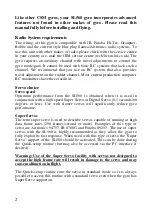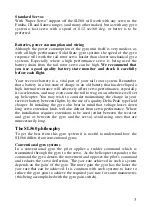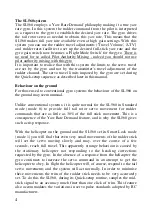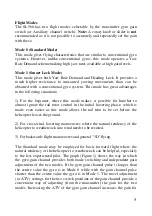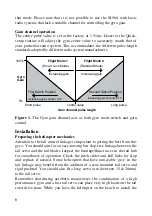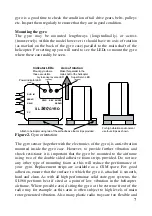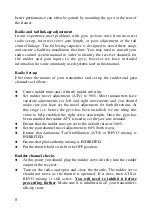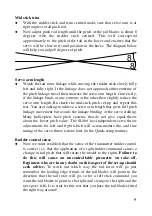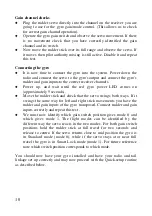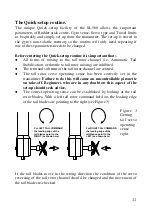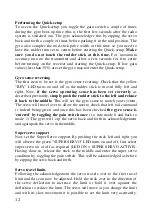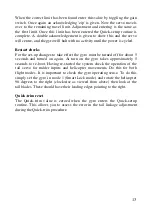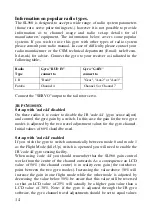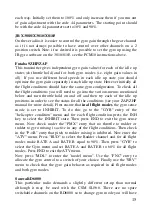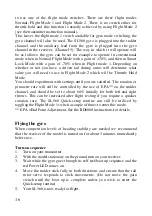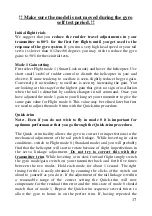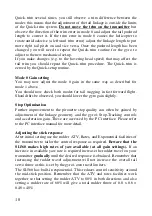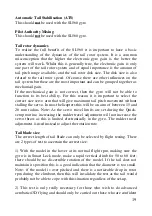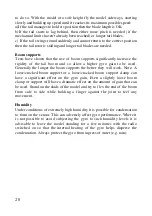
5
Flight Modes
The SL560 has two flight modes selectable by the transmitter gyro gain
switch (or Auxiliary channel switch).
Note:
A rotary knob or slider is
not
recommended as it is not possible to accurately and repeatedly set the gain
with these.
Mode 0 (Standard Mode)
This mode gives flying characteristics that are similar to conventional gyro
systems. However, unlike conventional gyros, this mode operates a Yaw
Rate Demand scheme making high yaw rates available at high gain levels.
Mode 1 (Smart Lock Mode)
This mode gives both Yaw Rate Demand and Heading Lock. It provides a
much higher resistance to unwanted yawing movements than can be
obtained with a conventional gyro system. This mode has great advantages
in the following situations:
1) For the beginner, where this mode makes it possible for him/her to
almost ignore the tail rotor control in the initial hovering phase, which is
made even easier as this mode allows the tail trim to be set before the
helicopter leaves the ground.
2) For cross-wind hovering manoeuvres where the natural tendency of the
helicopter to weathercock into wind needs to be resisted.
3) For backwards flight manoeuvres and general "3D" flying.
The Standard mode may be employed for basic forward flight where the
natural tendency of the helicopter to weathercock can be helpful, especially
to the less experienced pilot. The graph (Figure 1) shows the way in which
the gyro gain channel provides both mode switching and independent gain
adjustment of the two modes. If the gyro gain channel pulse is longer than
the centre value the gyro is in Mode 0 while with the gain channel pulse
shorter than the centre value the gyro is in Mode 1. The travel adjustment
(or ATV) settings for the two switch positions of the gain channel provide a
convenient way of adjusting (from the transmitter) the gain for the two
modes. Increasing the ATV of the gyro gain channel increases the gain for


